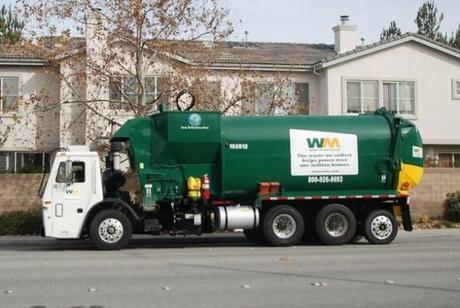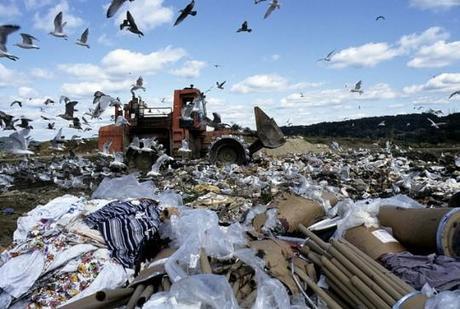What is Waste Management?
Americans alone are responsible for producing a hopping 220 million tons of waste a year. This number is far more than any other nation in the world. Because of this fact both the government and environmental associations have developed numerous methods of dealing with the problem. Waste management is that solution, a rather complex issue that encompasses more than 20 different industries. Waste management is collection, transportation, and disposal of garbage, sewage and other waste products.
Waste management is the process of treating solid wastes and offers variety of solutions for recycling items that don’t belong to trash. It is about how garbage can be used as a valuable resource. Waste management is something that each and every household and business owner in the world needs. Waste management disposes of the products and substances that you have use in a safe and efficient manner.
According to Wikipedia, “Waste management is the “generation, prevention, characterization, monitoring, treatment, handling, reuse and residual disposition of solid wastes”. There are various types of solid waste including municipal (residential, institutional, commercial), agricultural, and special (health care, household hazardous wastes, sewage sludge).”
Types of Waste Disposal
You will find there are eight major groups of waste management methods, each of them divided into numerous categories. Those groups include source reduction and reuse, animal feeding, recycling, composting, fermentation, landfills, incineration and land application. You can start using many techniques right at home, like reduction and reuse, which works to reduce the amount of disposable material used.

Let’s take a look at some of the things that you should know about waste management.
Methods of Waste Disposal
Landfill
The Landfill is the most popularly used method of waste disposal used today. This process of waste disposal focuses attention on burying the waste in the land. Landfills are found in all areas. There is a process used that eliminates the odors and dangers of waste before it is placed into the ground. While it is true this is the most popular form of waste disposal it is certainly far from the only procedure and one that may also bring with it an assortment of space.
This method is becoming less these days although, thanks to the lack of space available and the strong presence of methane and other landfill gases, both of which can cause numerous contamination problems. Many areas are reconsidering the use of landfills.
Incineration/Combustion
Incineration or combustion is a type disposal method in which municipal solid wastes are burned at high temperatures so as as to convert them into residue and gaseous products. The biggest advantage of this type of method is that it can reduce the volume of solid waste to 20 to 30 percent of the original volume, decreases the space they take up and reduce the stress on landfills. This process is also known as thermal treatment where solid waste materials are converted by Incinerators into heat, gas, steam and ash. Incineration is something that is very in countries where landfill space is no longer available, which includes Japan.
Recovery and Recycling
Resource recovery is the process of taking useful discarded items for a specific next use. These discarded items are then processed to extract or recover materials and resources or convert them to energy in the form of useable heat, electricity or fuel.
Recycling is the process of converting waste products into new products to prevent energy usage and consumption of fresh raw materials. Recycling is the third component of Reduce, Reuse and Recycle waste hierarchy. The idea behind recycling is to reduce energy usage, reduce volume of landfills, reduce air and water pollution, reduce greenhouse gas emissions and preserve natural resources for future use.
Plasma gasification
Plasma gasification is another form of waste management. Plasma is a primarily an electrically charged or a highly ionized gas. Lighting is one type of plasma which produces temperatures that exceed 12,600 °F . With this method of waste disposal, a vessel uses characteristic plasma torches operating at +10,000 °F which is creating a gasification zone till 3,000 °F for the conversion of solid or liquid wastes into a syngas.
During the treatment solid waste by plasma gasification, the waste’s molecular bonds are broken down as result of the intense heat in the vessels and the elemental components. Thanks to this process, destruction of waste and dangerous materials is found. This form of waste disposal provides renewable energy and an assortment of other fantastic benefits.

Composting
Composting is a easy and natural bio-degradation process that takes organic wastes i.e. remains of plants and garden and kitchen waste and turns into nutrient rich food for your plants. Composting, normally used for organic farming, occurs by allowing organic materials to sit in one place for months until microbes decompose it. Composting is one of the best method of waste disposal as it can turn unsafe organic products into safe compost. On the other side, it is slow process and takes lot of space.
and turns it toWaste to Energy (Recover Energy)
Waste to energy(WtE) process involves converting of non-recyclable waste items into useable heat, electricity, or fuel through a variety of processes. This type of source of energy is a renewable energy source as non-recyclable waste can be used over and over again to create energy. It can also help to reduce carbon emissions by offsetting the need for energy from fossil sources. Waste-to-Energy, also widely recognized by its acronym WtE is the generation of energy in the form of heat or electricity from waste.
Avoidance/Waste Minimization
The most easier method of waste management is to reduce creation of waste materials thereby reducing the amount of waste going to landfills. Waste reduction can be done through recycling old materials like jar, bags, repairing broken items instead of buying new one, avoiding use of disposable products like plastic bags, reusing second hand items, and buying items that uses less designing.
Recycling and composting are a couple of the best methods of waste management. Composting is so far only possible on a small scale, either by private individuals or in areas where waste can be mixed with farming soil or used for landscaping purposes. Recycling is widely used around the world, with plastic, paper and metal leading the list of the most recyclable items. Most material recycled is reused for its original purpose.
The Bottom Line
There are certain waste types that cannot be disposed of without special handling which will prevent contamination from occurring. Biomedical waste is one example of such. This is found in health care facilities and similar institutions. The special waste disposal system for this unit in place to dispose of this type of waste.
As you can see there are plenty of important things that you should know about waste management and disposal in order to ensure that you are safe, as well as that you are keeping the environment safe. It is your choices as to how you will dispose of waste, however it is always in your best interest to take a look at all of the options that you have available before making the choice.

